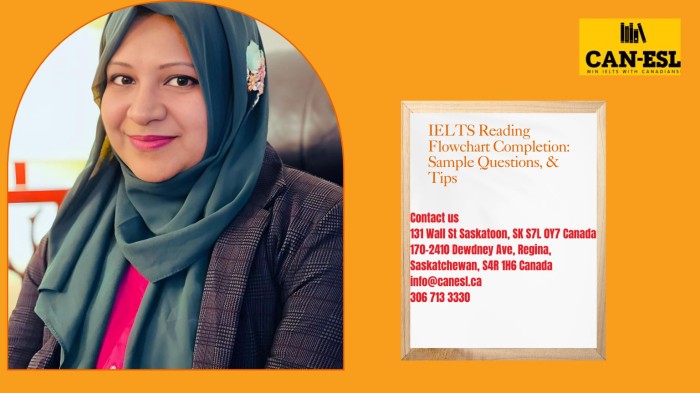

IELTS
Reading Flowchart Completion: Sample Questions & Tips
The IELTS
Reading section can be daunting, especially with various question types like
flowchart completion. These questions assess your comprehension, organization,
vocabulary, and grammatical accuracy. In this blog post, we’ll break down the
steps to effectively tackle flowchart completion questions, provide tips for
success, and offer practice tests to hone your skills. Plus, you can download a
free practice PDF for comprehensive preparation!
Overview
of IELTS Reading Flowchart Completion
Flowchart
completion questions require test-takers to fill in gaps in a flowchart that
outlines processes, sequences of events, or stages. This question type appears
in both the Academic and General IELTS Reading sections, but it’s more common
in Academic passages that deal with scientific processes, historical events, or
procedural descriptions.
Purpose
of Flowchart Questions
These
questions assess your ability to:
Example
of IELTS Reading Flowchart Completion
To
illustrate how these questions function, let’s look at a couple of sample
flowchart completion items.
Sample 1
Imagine a
flowchart that outlines the process of photosynthesis, with specific steps
omitted for you to fill in based on a provided passage.
Sample 2
Consider
a flowchart describing the life cycle of a butterfly, where test-takers need to
complete stages such as egg, larva, pupa, and adult based on text.
These
examples show how candidates must either select from a list of options or
extract specific words from the passage to complete the flowchart accurately.
Steps to
Solve IELTS Reading Flowchart Completion Questions
Here’s a
systematic approach to tackle flowchart completion questions effectively:
Step 1:
Understand the Flowchart Question
Examine
the flowchart closely, noting the sequence of information and identifying what
specific details are missing.
Step 2:
Identify Keywords
Look for
keywords or phrases in the flowchart that will guide you on what to search for
in the passage. These keywords can lead you to the relevant sections of the
text.
Step 3:
Skim the Passage
Quickly
skim the passage to get an overall understanding. Pay attention to headings,
subheadings, and keywords that match the flowchart, which will help you locate
the corresponding part of the text.
Step 4:
Scan for Specific Information
Once you
have a general idea of where the relevant information may be, scan that section
of the passage for details that correspond to the flowchart.
Step 5:
Match Information Carefully
Ensure
that the information you find matches the flowchart requirements precisely. Pay
attention to details, as minor discrepancies can lead to incorrect answers.
Step 6:
Complete the Flowchart
Write
your answers clearly in the flowchart, checking for spelling and grammatical
accuracy, as errors can impact your score.
Step 7:
Review Your Answers
After
filling in the blanks, take a moment to review your answers. Ensure that they
logically fit into the flowchart and accurately reflect the passage
information.
Common
Errors to Avoid While Practicing IELTS Reading Flowchart Completion Questions
Recognizing
common pitfalls can greatly enhance your performance. Here are some errors to
avoid:
Tips to
Solve IELTS Reading Flowchart Completion Topics
Here are
some effective strategies to enhance your performance in flowchart completion
questions:
1.
Understand the Structure
Recognize
that IELTS reading passages often follow a logical structure, especially those
related to processes. Familiarity with this can help you predict the order of
information.
2. Use
Keywords
The
keywords in the flowchart can guide you in locating relevant details in the
passage. Keep an eye out for these keywords and their synonyms.
3. Master
Paraphrasing
IELTS
examiners often test your understanding of synonyms and paraphrases. Be
prepared to identify reworded ideas within the text.
4. Look
for Signposting Words
Words
like “first,” “next,” “then,” and “finally” help follow the sequence of events
in the passage. They indicate the order of steps and can aid in completing the
flowchart.
5.
Understand Context
Ensure
that your answers fit within the context of the passage. This helps ensure
grammatical correctness and logical coherence.
6. Time
Management
Practice
managing your time effectively, as flowchart completion questions can be
time-consuming. Working under timed conditions can help you improve this skill.
7. Avoid
Guessing Without Evidence
While
it's essential not to dwell on any single question, avoid guessing without
solid evidence from the passage. Always base your answers on the text.
Mastering
IELTS reading flowchart completion questions and understanding of key
strategies. By following the steps outlined in this article and applying the
tips provided, you can enhance your performance in this challenging question
type. Be sure to download the practice PDF and take advantage of the sample
tests to solidify your skills. Good luck with your IELTS preparation!